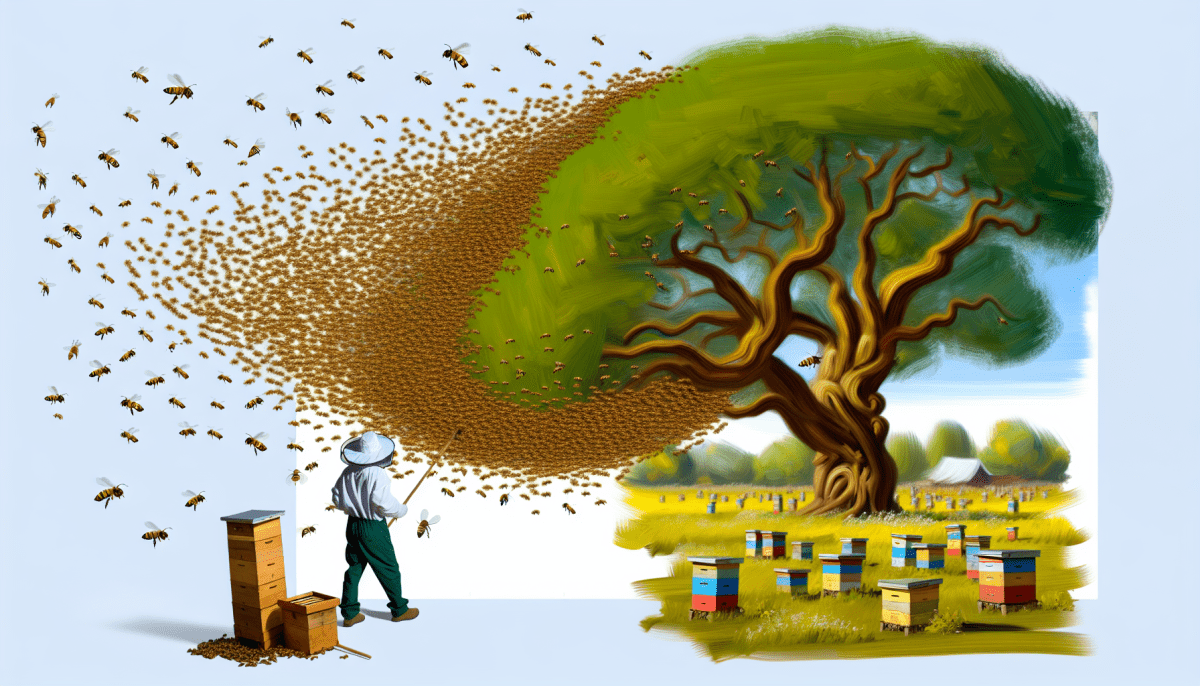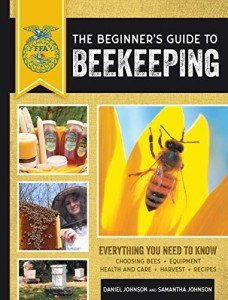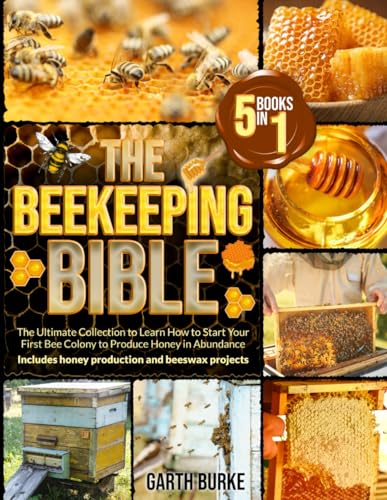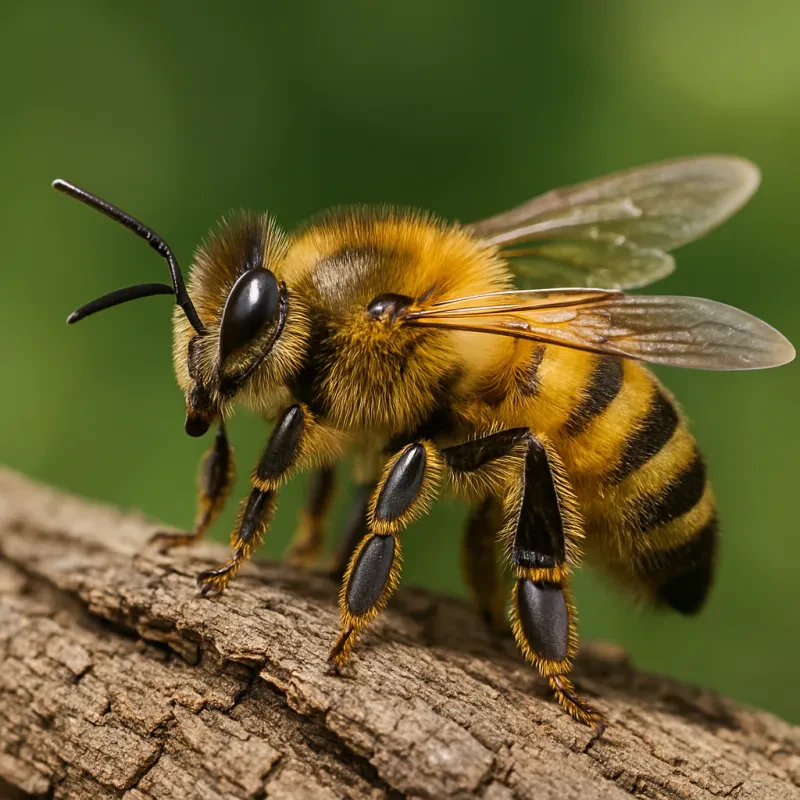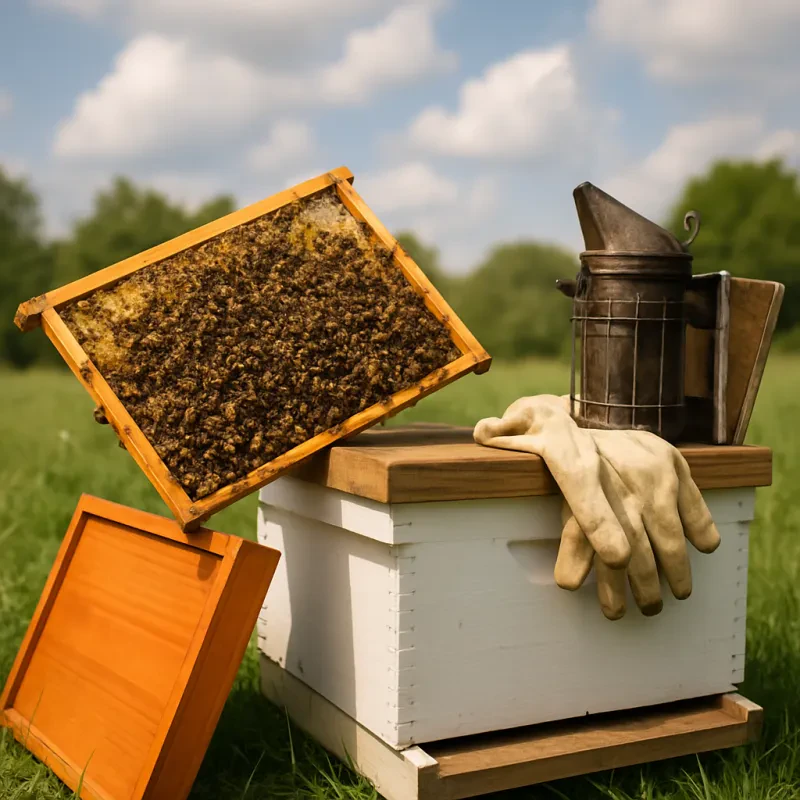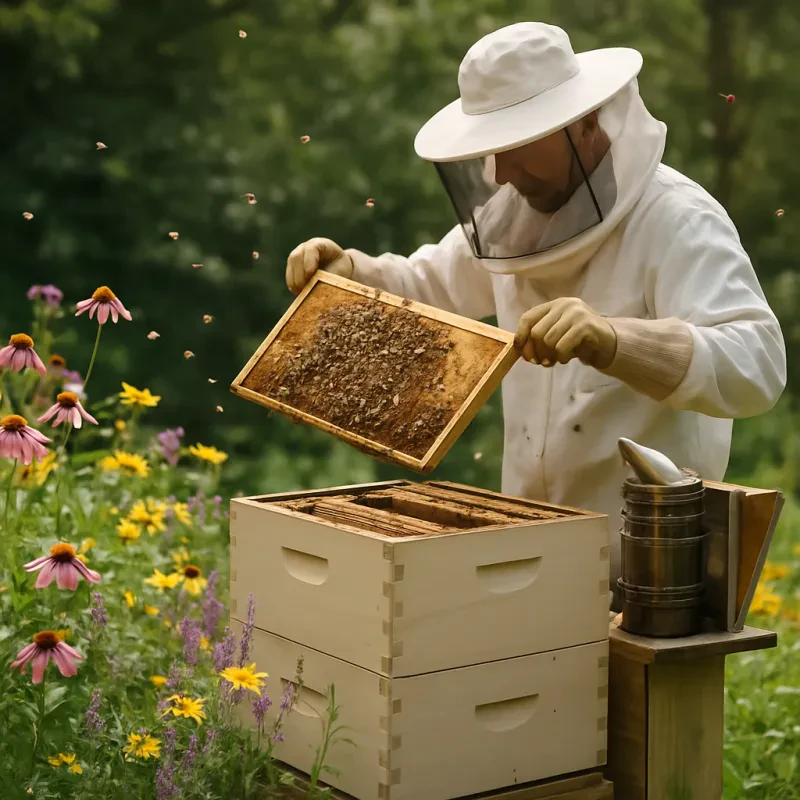€6.04
4.67 out of 5 starsBeekeeping 101: The Ultimate Beginner's Guide (FFA)
Everything you need to know to get started in beekeeping, from choosing the right equipment and setting up your hive to understanding bee behavior and harvesting honey
Product information
Product Review Score
Product links
Removing a swarm of honeybees from a tree is a delicate process that requires patience, caution, and respect for these beneficial insects. Honeybees play a critical role in pollinating plants, including many crops essential for our food supply. Therefore, it's important to approach the removal process in a way that preserves the health of the bee colony. This guide will walk you through the steps to safely and effectively remove honeybees swarming in a tree.
Understanding Honeybee Swarms
Before attempting to remove a swarm, it's crucial to understand why bees swarm and what a swarm represents. Swarming is a natural part of the honeybee life cycle and occurs when a colony grows too large for its current hive. The colony will produce a new queen, and the old queen will leave with about half of the colony's workers to find a new home, leaving the new queen with the remaining workers. Swarms are generally docile, as bees do not have brood (baby bees) or honey stores to defend.
Step 1: Assess the Situation
1. Identify the Swarm: Make sure you're dealing with honeybees and not another type of insect, such as wasps or hornets. Honeybees are smaller, have a fuzzier appearance, and are less aggressive.
2. Swarm Size and Location: Assess the size of the swarm and its location in the tree. Swarms can range from a small cluster to a large mass of thousands of bees.
3. Safety: Consider the safety of people and pets in the vicinity. If the swarm is in a high-traffic area, you might need to cordon off the area temporarily.
Step 2: Contact a Professional
The safest and most effective way to remove a swarm is to contact a professional beekeeper or a bee removal service. Many beekeepers are happy to collect swarms for free or for a nominal charge because they can add these bees to their apiaries.
Look for Local Beekeeping Clubs: They often have lists of beekeepers who offer swarm removal services.
Check for Bee Removal Services: Some companies specialize in non-lethal bee removal.
Step 3: Preparing for Removal
If you're experienced with bees and have decided to proceed on your own, ensure you have the necessary equipment:
1. Protective Clothing: Wear a bee suit, gloves, and a veil to protect yourself from stings.
2. Bee Box or Hive: Prepare a new home for the bees. A cardboard box can work temporarily, but a prepared beehive is ideal.
3. Bee Brush: To gently coax the bees into their new home.
Step 4: Removing the Swarm
1. Approach Calmly:*Bees can sense agitation. Approach the swarm calmly and quietly to avoid alarming them.
2. Position the Hive: Place the bee box or hive directly under the swarm if possible.
3. Gently Collect the Bees: If the swarm is on a branch, you can gently shake the branch to drop the bees into the box. If shaking is not an option, use the bee brush to gently scoop the bees into the box.
4. Ensure the Queen is Inside: The rest of the swarm will follow the queen. You can usually tell she's inside if you see bees fanning at the entrance of the box, releasing a pheromone that signals the other bees to follow.
Step 5: Aftercare of the Swarm
1. Give Them Time: After most of the swarm has been collected, leave the box near the original swarm location until evening. This allows straggler bees to find their way to the new colony.
2. Relocate the Bees: Once it's dark, and the bees have settled, you can seal the box and move it to its new location. Be sure to open the box once it's in a safe place to let the bees out.
Step 6: Preventing Future Swarms
While it's not always possible to prevent swarms, regular hive inspections and management practices can reduce the likelihood:
1. Provide Enough Space: Ensure your hives have enough space to accommodate the colony's growth.
2. Swarm Management Techniques: Beekeepers can use techniques like splitting hives before swarming occurs.
Important Considerations
- Legal Requirements: Check local regulations regarding beekeeping and bee removal. Some areas may require professional removal.
- Bee Conservation: Always aim for non-lethal removal and relocation. Honeybees are under threat from habitat loss, pesticides, and diseases. Conserving them is vital for the environment and agriculture.
- Safety First: If anyone nearby is allergic to bee stings, it's especially important to ensure their safety by keeping them away from the swarm removal area and having an epinephrine auto-injector (e.g., EpiPen) accessible.
Removing a swarm of honeybees from a tree is a task that should be approached with care and respect for these essential pollinators. Whenever possible, seek the assistance of a professional to ensure the safety of both the people involved and the bees. By following these steps, you can help preserve the health of the bee population while also keeping your community safe.
€18.96
4.35 out of 5 starsUltimate Beekeeping Guide: Learn to Start Bee Colony
Become a master beekeeper and start your own thriving bee colony with our ultimate guide
Product information
Product Review Score
Product links
